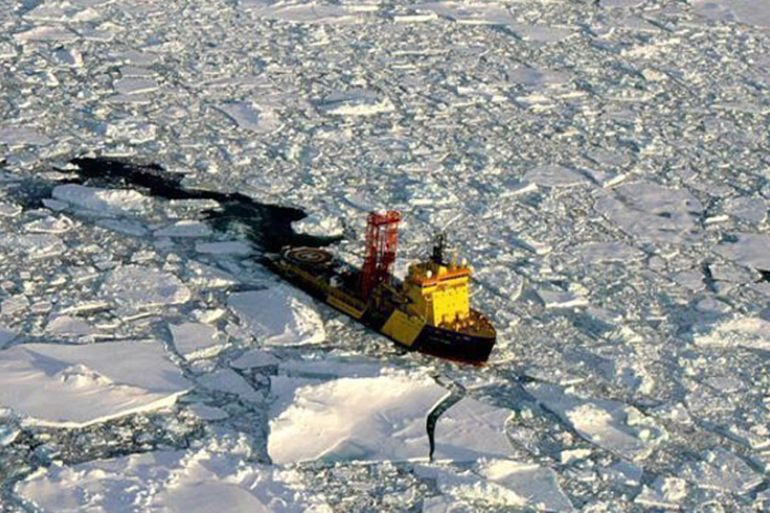Arctic sea ice disappearing at record rate
Coverage has fallen to a new low for this early in the year with the prospect of further melting in coming weeks.

Sea ice in the Arctic Ocean is at its lowest May level since records began in the 1980s.
Ice coverage around the North Pole is currently just 11.32m sq km, compared with a 30 year average of 12.5m sq km.
Keep reading
list of 4 itemsAfter the Hurricane
World’s coral reefs face global bleaching crisis
Why is Germany maintaining economic ties with China?
This figure is even lower than the 11.89m sq km of 2012, when sea ice coverage reached its lowest summer time level. Ice extent generally reaches its lowest level in mid September. In 2012 there were just 3.2m sq km of sea ice in the Arctic.
Arctic sea ice decreased at a rate of around four percent per decade between 1978 and 1996, according to the Intergovernmental Panel on Climate Change (IPCC).
The IPCC expects the extent of sea ice to decrease by 20 percent by 2050, with some ice-free summers by the same time.
Melting sea ice does not affect sea levels but it does affect the amount of heat that is absorbed. Typically sea ice reflects between 50 and 70 percent of incoming solar radiation, compared with just seven to 10 percent by ocean water.
This is likely to result in accelerating warming in the Arctic, which in turn, raises the likelihood of accelerating ice loss – a negative feedback.
A loss of sea ice reduces the protection afforded to coastal regions and is expected to result in higher waves and an increase in storm surges, inundation and coastal erosion.
The loss of sea ice does have some benefits; previously inaccessible shipping routes will become open to commercial traffic.
For example, voyage times between Rotterdam, Netherlands and Yokohama, Japan, would be reduced by 40 percent using this Northern Sea Route compared with the conventional route through the Suez Canal.
It is uncertain whether this year’s rapid decrease in coverage will be maintained, but warm air over Canada and Alaska is expected to move across the North Pole in the coming week.
The melting of surface ice sets up melt ponds which absorb heat and make the acceleration of ice loss much more likely.